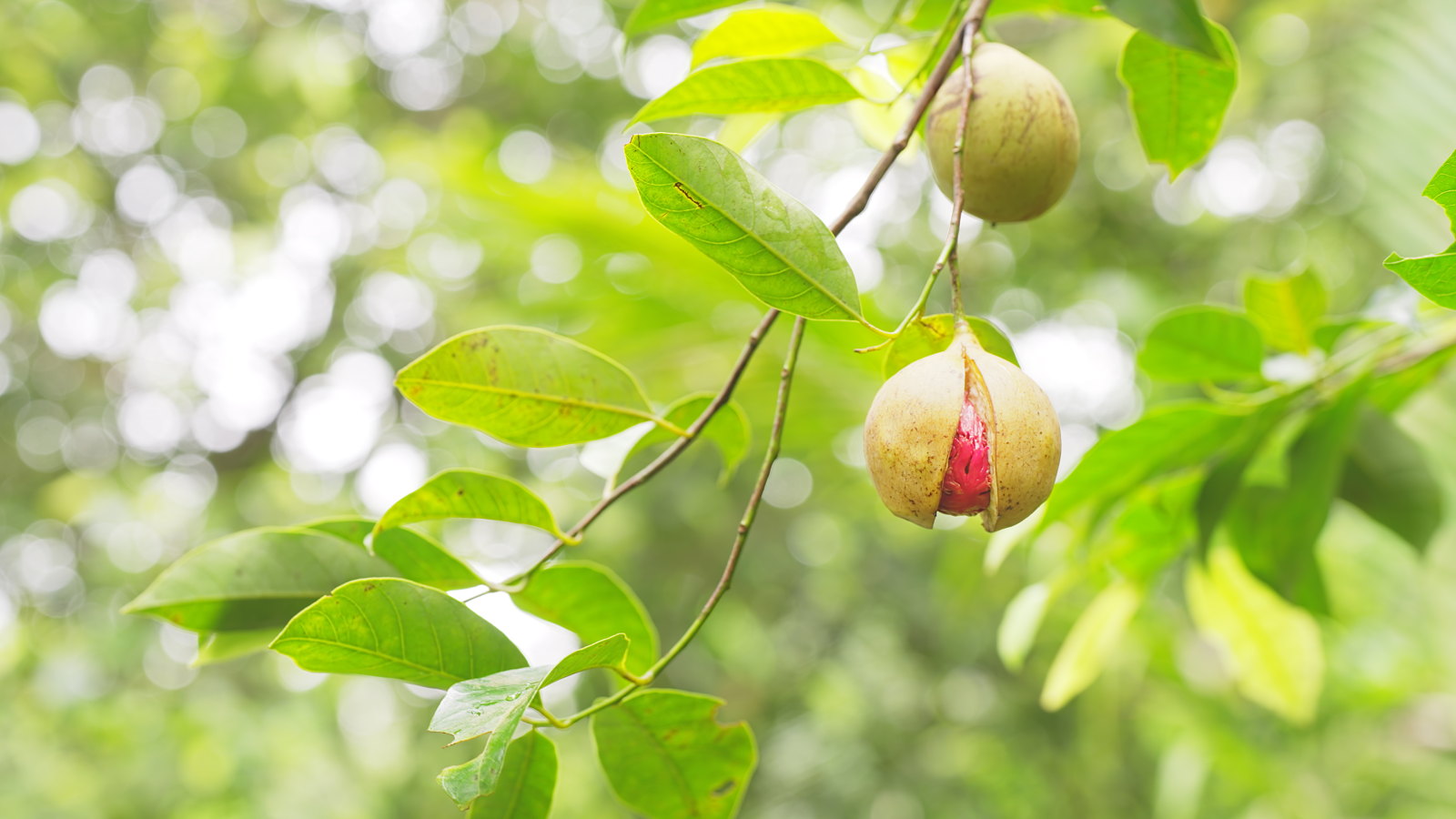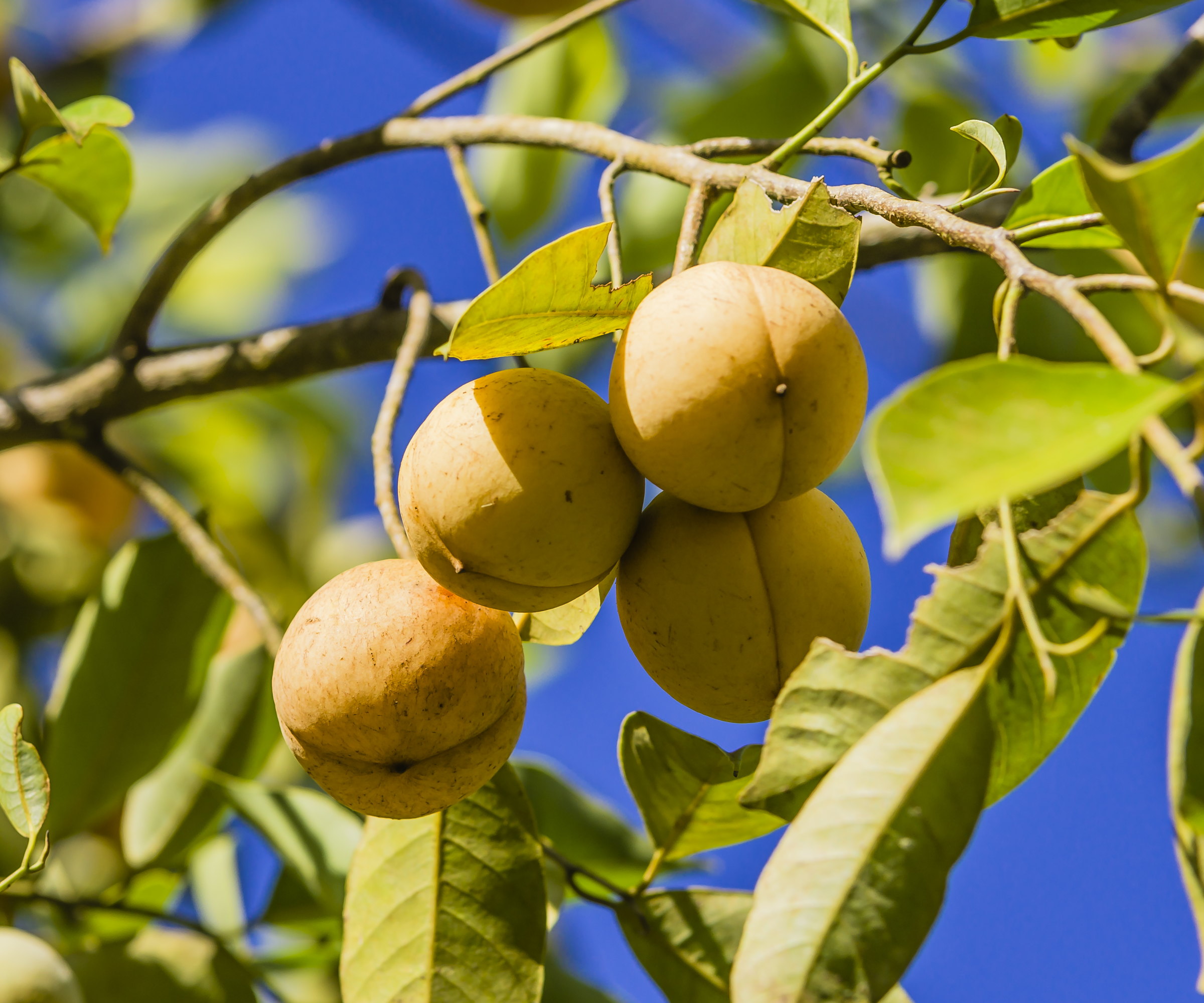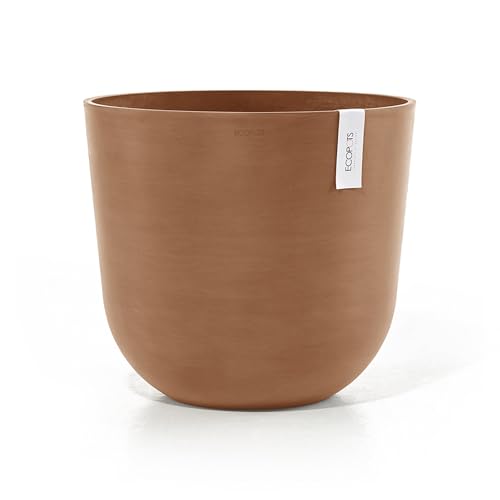How to grow a nutmeg tree – professional gardeners reveal the secrets behind cultivating the tropical evergreen for treasured spice
You can get two highly-prized spices from one tree if you live in a warm climate


Nutmeg has become a common spice around the world, especially when the temperatures drop and it gets added to all manner of baked goods or grated on the top of seasonal hot drinks. While so many people enjoy the spice each year, have many people considered if they can grow a nutmeg tree at home?
A nutmeg tree actually produces two highly-prized spices, nutmeg from its seed and mace from the membrane around the seed. The tropical tree is native to the Molucca Islands in Indonesia, also known as the Spice Islands, and, perhaps unsurprisingly, it thrives growing in warmer climates. Though there are possibilities to grow a nutmeg tree in cooler climates in pots.
Growing a nutmeg tree, and particularly getting it to flower and fruit, can pose a few challenges, but it is possible. If you want to learn more about how to grow a nutmeg tree, I spoke to two experienced horticulturists who cultivate nutmeg in botanical gardens. This guide deep dives into where to plant trees, how to properly care for them, and more.

How to grow a nutmeg tree – an expert guide
A nutmeg tree (Myristica fragrans) is an evergreen tree that tends to reach 20-50 feet tall, though mature trees are known to surpass 60 feet.
It has fragrant, dark-green leaves and bell-shaped, waxy flowers. However, the tree is dioecious and produces male and female flowers on different trees, so you need multiple trees for pollination.
Nutmeg trees have been important throughout history and are cultivated predominantly in tropical regions of the globe. If you want to grow a nutmeg tree, though, here are some expert pointers for success:
How to grow a nutmeg tree – planting tips

Nutmeg trees thrive in warm, humid conditions and don’t tolerate cold well. They are only suitable for growing outdoors in US hardiness zones 10 and 11. If you live in a cooler year-round climate, you can grow trees in pots to overwinter plants indoors in a greenhouse, conservatory, or porch for protection.
Design expertise in your inbox – from inspiring decorating ideas and beautiful celebrity homes to practical gardening advice and shopping round-ups.
Paul Blackmore, manager of the Dorothy Chapman Fuqua Conservatory at Atlanta Botanical Garden, which houses several healthy nutmeg trees, says: ‘We grow our trees in very large pots in our tropical conservatory. They are tropical trees and so need temperatures between 70 and 85°F.’
Aaron Hernandez Lee, horticulture team leader for the Rainforest Biome at the Eden Project, which also has thriving nutmeg trees, claims growing the tree is ‘not particularly challenging’ if you can replicate their ideal natural environments.
But, he adds that getting a tree to fruit can be more problematic as it stops flowering and drops fruit if temperatures get outside of its comfort zone.
Wherever you grow a nutmeg tree, it wants to be sheltered from cold temperatures below 30°F, high winds, and even excessive sun, as the tree is susceptible to leaf scorch. An ideal position would see the tree enjoy morning sun and some protection from strong afternoon sunshine.
‘They grow naturally as understory plants in tropical forests, where they are sheltered from direct sunlight and strong winds,’ says Aaron.
‘In the wild, they usually grow in volcanic soils, rich in minerals and essential nutrients,’ he adds. ‘When cultivated, they prefer slightly acidic, well-draining, loamy soils enriched with organic matter.’
Incorporating compost, well-rotted manure, or leaf mold will enhance any type of soil, ensuring it retains moisture, drains effectively, and is rich in nutrients to support the healthy development of nutmeg trees.
How to grow a nutmeg tree – care tips

Watering
In their native tropical habitat, nutmeg trees experience a rainy season and a dry season.
However, Aaron Hernandez Lee claims that when you grow a nutmeg tree, they ‘appreciate consistent soil moisture’ but do benefit from drier periods during the year.
He says: ‘During spring and summer, we water them regularly, making sure the soil never becomes waterlogged. In the winter months, we reduce watering to a minimum, just enough to maintain soil structure.’
Check the top few inches of the soil to judge when to water plants, and water plants in containers more often to keep the soil consistently moist.
Take care not to overwater plants, as Aaron warns: ‘The most important thing to avoid is soggy soil, especially in moderate temperatures.’
Mulching around trees will help retain moisture in the soil. Nutmeg trees also benefit from regular misting to boost humidity.
Fertilizing
Nutmeg trees growing in rich, fertile soil require fewer additional nutrients in the form of fertilizers. Annual feeding with organic matter, such as compost or well-rotted manure, enriches the soil, helping trees stay healthy and produce fruits.
Ideal feeds for nutmeg trees include balanced slow-release fertilizers formulated for fruit trees, while Aaron Hernandez Lee says: ‘We feed our trees twice a year with seaweed fertilizer and small amounts of organic chicken manure pellets, as these can raise the soil’s pH.’
Pruning
Nutmeg trees are not fast-growing trees, so they don’t require extensive regular pruning if you are growing them for ornamental purposes. Trees grown for spice production do require more trimming, as it promotes more branches to increase yield.
The ideal time to prune trees is in late winter and early spring, and regular pruning involves removing any dead, diseased, or damaged branches and gently trimming to shape the tree.
As nutmeg trees can grow very tall, a professional arborist will be required for mature trees.
Fruiting
Paul Blackmore from Atlanta Botanical Garden says that nutmeg trees start fruiting around ‘7 or 8 years’ after planting when growing in ideal conditions.
However, Aaron Hernandez Lee adds: ‘It’s important to remember that Myristica fragrans is a dioecious plant, meaning you need both a male and a female tree to produce fruit.’
A mature nutmeg tree can produce fruits for decades, and these fruits are ripe up to nine months after the tree flowers, which can be multiple times per year.
The fruit cracks open to show the seed at harvest time. They drop from the tree naturally and can be collected, or you can harvest them from the tree with a picker.
Propagation
The most common way to propagate a nutmeg tree is from seed. ‘We propagate them from seed at the Botanical Garden, but I know many people grow them from layering,’ admits Paul Blackmore. ‘I’ve heard of people taking plant cuttings, but I understand that it is difficult.’
To grow a nutmeg tree from seed, you can collect seeds as the fruits drop, but they only have a short period of viability and must be planted within 45 days. Soak the seeds before sowing them in individual pots filled with seed compost and placing somewhere warm.
It can take up to six weeks for the seeds to germinate, but one risk of growing nutmeg from seed is there is a 50 per chance of getting unproductive male seedlings.
FAQs
What is the lifespan of a nutmeg tree?
Nutmeg trees usually live up to 60 years, however, in the wild trees have been recorded surpassing 100 years old.
How can you tell if a nutmeg tree is male or female?
The distinction between male and female nutmeg trees is identifiable by the flowers. Male flowers appear in groups of up to 10 and each has anywhere up to 20 stamens, while female flowers are longer, have a single ovary, are petal-less, and occur in smaller groups.
However, as nutmeg trees often do not flower until they reach seven or eight years of age, it takes time to tell if any tree is male or female. Home growers with both trees may need to hand pollinate plants, to supplement the natural process usually carried out by insects.
Another highly-prized spice you can grow at home is saffron. The luxurious spice comes from Crocus sativus, also known as the ‘saffron crocus’, which is grown from corms or bulbs planted in late summer.
When you grow saffron, the distinctive, prized red stigmas are picked from the center of the flowers and need to be dried quickly in a warm and dark place.

Drew has worked as a writer since 2008 and was also a professional gardener for many years. As a trained horticulturist, he worked in prestigious historic gardens, including Hanbury Hall and the world-famous Hidcote Manor Garden. He also spent time as a specialist kitchen gardener at Soho Farmhouse and Netherby Hall, where he grew vegetables, fruit, herbs, and cut flowers for restaurants. Drew has written for numerous print and online publications and is an allotment holder and garden blogger. He is shortlisted for the Digital Gardening Writer of the Year at the 2025 Garden Media Guild Awards.
You must confirm your public display name before commenting
Please logout and then login again, you will then be prompted to enter your display name.


